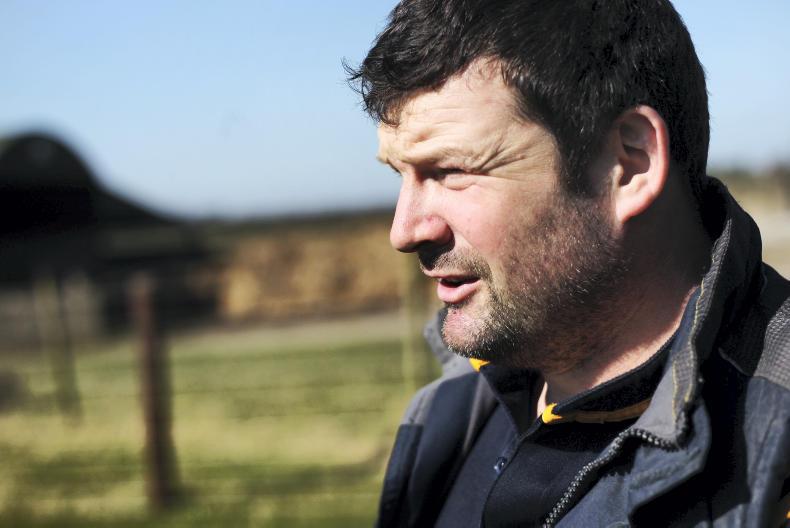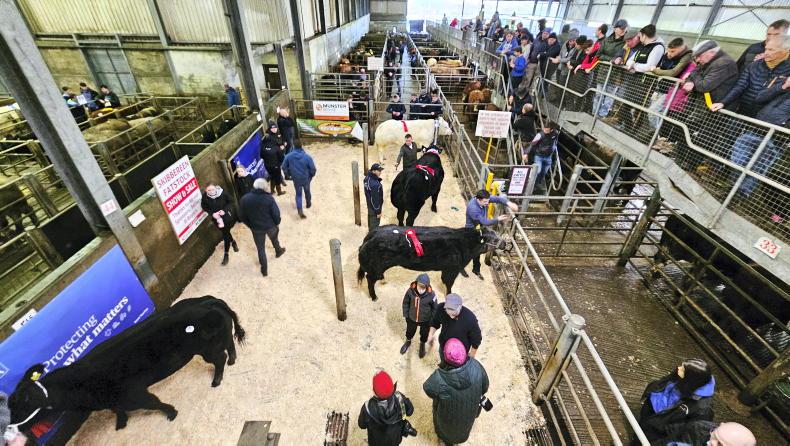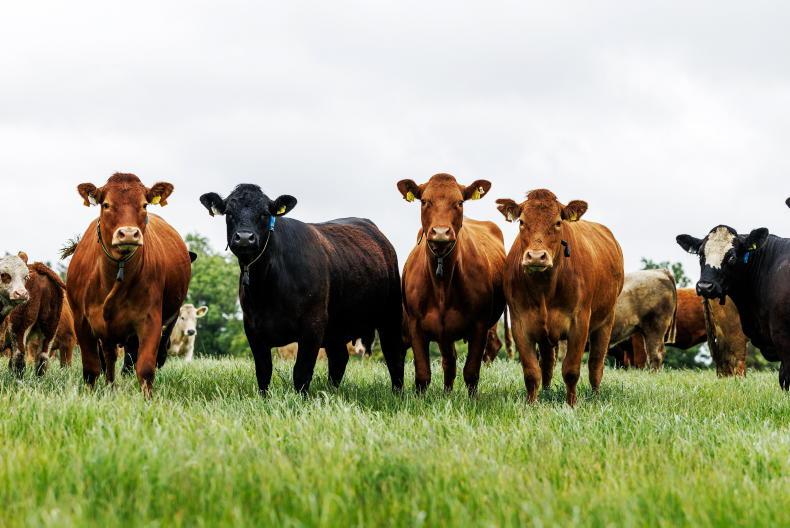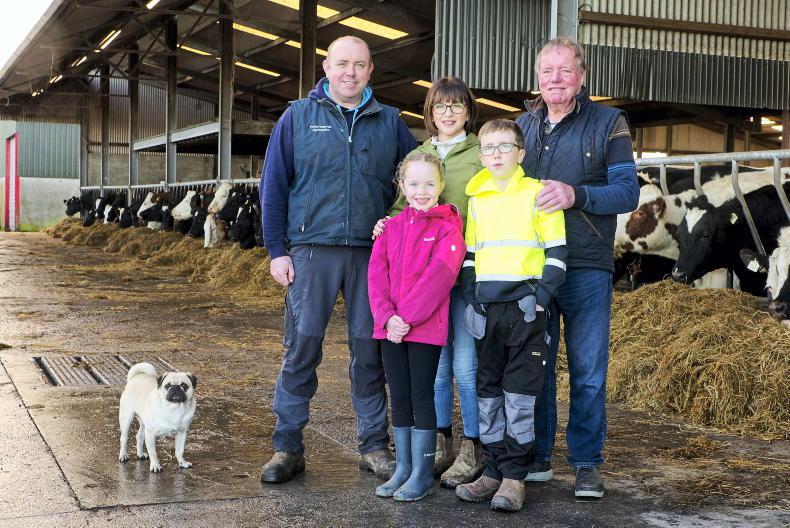I’d like to start off by wishing everyone a happy new year. So far, 2020 has been very welcoming weather wise. I even managed to get into the sea for a New Year’s Day dip while visiting my grandparents in Sligo. It was something I have always wanted to do but had never got around to it before.
We managed to hike the Devil’s Bit and Knocknarea over the Christmas break. It was fantastic to get out in the fresh air and take in the beautiful scenery with Alison and the children. With such a positive, active start to the new year we have created a wishlist of places we want to get to over the next few months. Many of them are almost on our doorstep but are places we have never visited, so I am looking forward to tackling this list.
Sheep census
As always in January, with the start of the new year, I will be spending a good bit of time in the farm office doing paper exercises. First up was the national sheep census which required us to take a count of the sheep and their age categories on 31 December. These forms must be returned to the Department by 31 January and are the basis for our stocking rate for the Sheep Welfare Scheme. So, if any of you haven’t filled yours in yet, there is still time to complete it before the due date.
Second is the task of filling out a profit monitor for the farm. I fill out one of these every year and find it useful in helping to identify areas where I can improve financial performance. There is no point just throwing in any old figure, as for this to work properly spending time filling in the form as accurately as possible is the only way. By comparing it to other years, I am able to see where previous changes to my farm management have either improved or not. It provides a focus for the year ahead and allows me an opportunity to try to work on any areas that need improvement.
Scanning
We scanned the ewes that were artificially inseminated here as part of the Central Progeny Testing programme during Christmas week, with 2.12 lambs per ewe scanned. These, however, are only the ewes that held to the AI process; the repeats have been removed and are being run as a separate group. We also scanned the natural service ewes last month which included a mob of ewes which were mated through cervical AI. This group’s scan results were excellent, with two lambs per ewe scanned. As with the other batch of ewes, we didn’t scan the repeats which have joined with the other mob of repeat ewes. Once these are scanned, I will have a better handle of how the crop size is looking for the spring and how the different breeding groups performed.
The ewes that have been scanned are now housed, with the repeats remaining outside grazing on rape. This year I have decided to try out feeding the ewes a total mixed ration over the housing period. This, in theory, should reduce workload and stress on animals at feeding time. I will have to keep a close eye on the ewes’ condition scores as if a ewe has gone off her feed, it can be trickier to pick up compared to the traditional feeding of meal.
Vaccine
I plan on purchasing my 10-in-one vaccine along with a fluke dose for the ewes now as I will be starting to vaccinate the first groups before the end of this month, with the rest vaccinated next month. The ewe lambs will be getting two shots, so I will start vaccinating them this month also and then again later in February to make sure they have been vaccinated properly for next year.
Read more
Farmer Writes: heavy rain hits grass utilisation
Farmer Writes: tweaking the system to make savings
I’d like to start off by wishing everyone a happy new year. So far, 2020 has been very welcoming weather wise. I even managed to get into the sea for a New Year’s Day dip while visiting my grandparents in Sligo. It was something I have always wanted to do but had never got around to it before.
We managed to hike the Devil’s Bit and Knocknarea over the Christmas break. It was fantastic to get out in the fresh air and take in the beautiful scenery with Alison and the children. With such a positive, active start to the new year we have created a wishlist of places we want to get to over the next few months. Many of them are almost on our doorstep but are places we have never visited, so I am looking forward to tackling this list.
Sheep census
As always in January, with the start of the new year, I will be spending a good bit of time in the farm office doing paper exercises. First up was the national sheep census which required us to take a count of the sheep and their age categories on 31 December. These forms must be returned to the Department by 31 January and are the basis for our stocking rate for the Sheep Welfare Scheme. So, if any of you haven’t filled yours in yet, there is still time to complete it before the due date.
Second is the task of filling out a profit monitor for the farm. I fill out one of these every year and find it useful in helping to identify areas where I can improve financial performance. There is no point just throwing in any old figure, as for this to work properly spending time filling in the form as accurately as possible is the only way. By comparing it to other years, I am able to see where previous changes to my farm management have either improved or not. It provides a focus for the year ahead and allows me an opportunity to try to work on any areas that need improvement.
Scanning
We scanned the ewes that were artificially inseminated here as part of the Central Progeny Testing programme during Christmas week, with 2.12 lambs per ewe scanned. These, however, are only the ewes that held to the AI process; the repeats have been removed and are being run as a separate group. We also scanned the natural service ewes last month which included a mob of ewes which were mated through cervical AI. This group’s scan results were excellent, with two lambs per ewe scanned. As with the other batch of ewes, we didn’t scan the repeats which have joined with the other mob of repeat ewes. Once these are scanned, I will have a better handle of how the crop size is looking for the spring and how the different breeding groups performed.
The ewes that have been scanned are now housed, with the repeats remaining outside grazing on rape. This year I have decided to try out feeding the ewes a total mixed ration over the housing period. This, in theory, should reduce workload and stress on animals at feeding time. I will have to keep a close eye on the ewes’ condition scores as if a ewe has gone off her feed, it can be trickier to pick up compared to the traditional feeding of meal.
Vaccine
I plan on purchasing my 10-in-one vaccine along with a fluke dose for the ewes now as I will be starting to vaccinate the first groups before the end of this month, with the rest vaccinated next month. The ewe lambs will be getting two shots, so I will start vaccinating them this month also and then again later in February to make sure they have been vaccinated properly for next year.
Read more
Farmer Writes: heavy rain hits grass utilisation
Farmer Writes: tweaking the system to make savings










SHARING OPTIONS